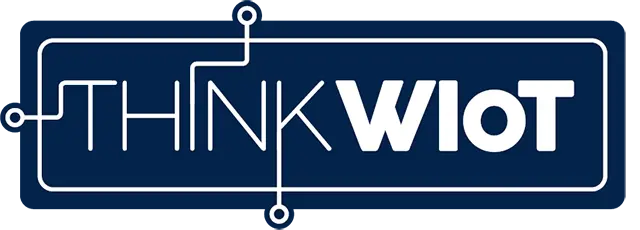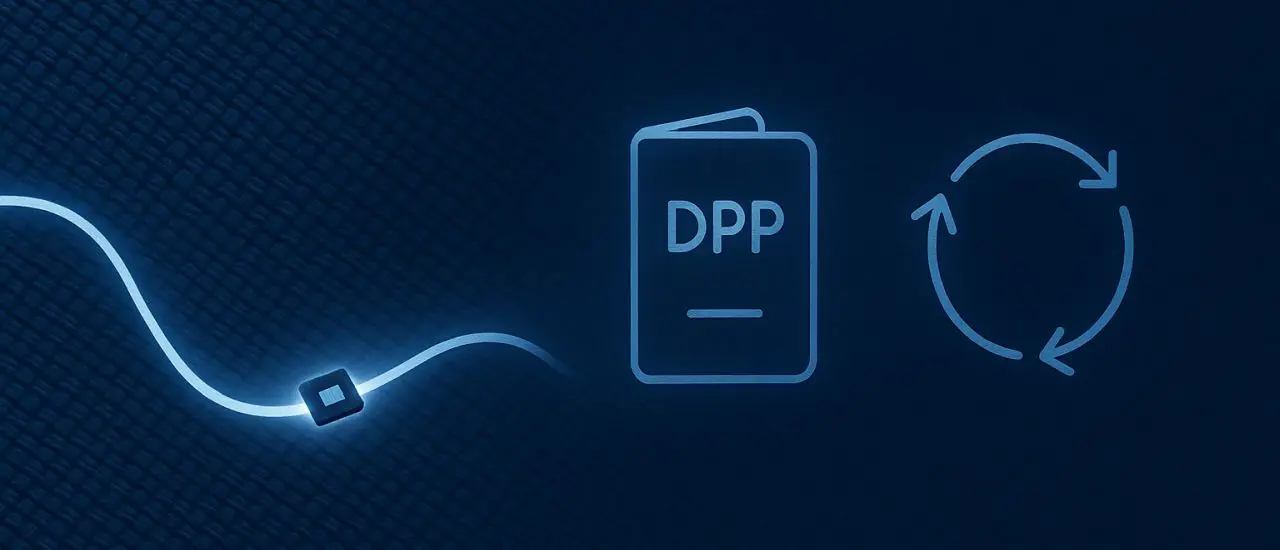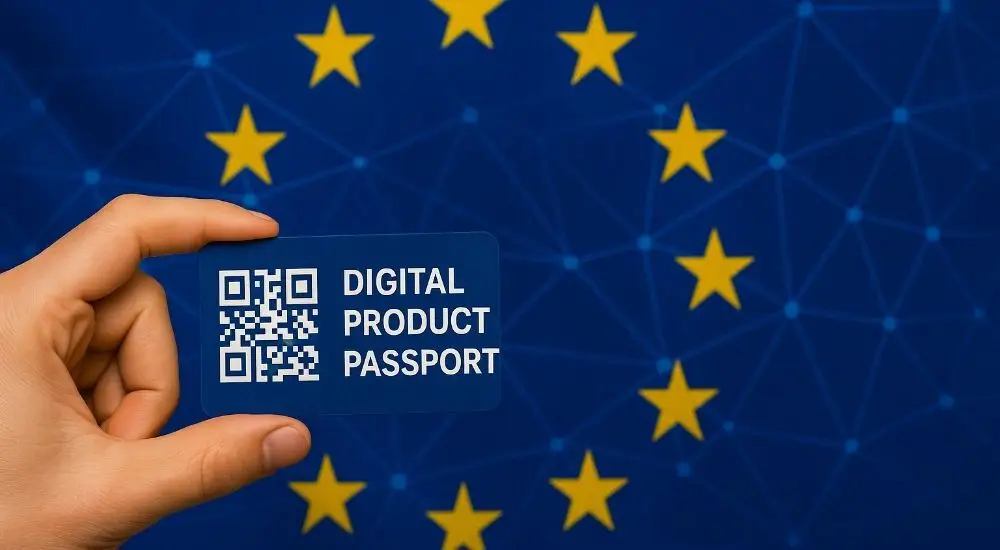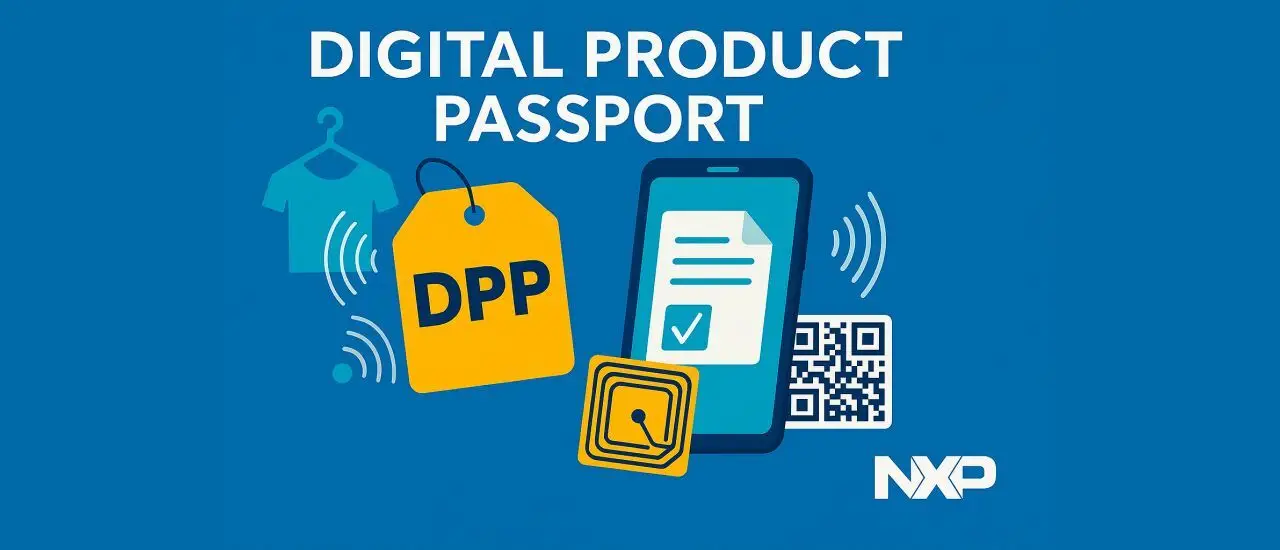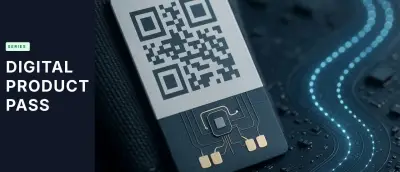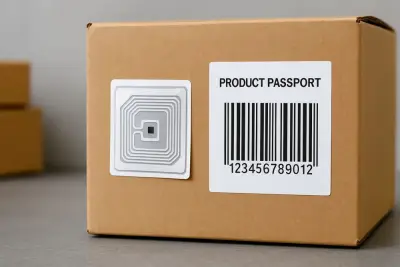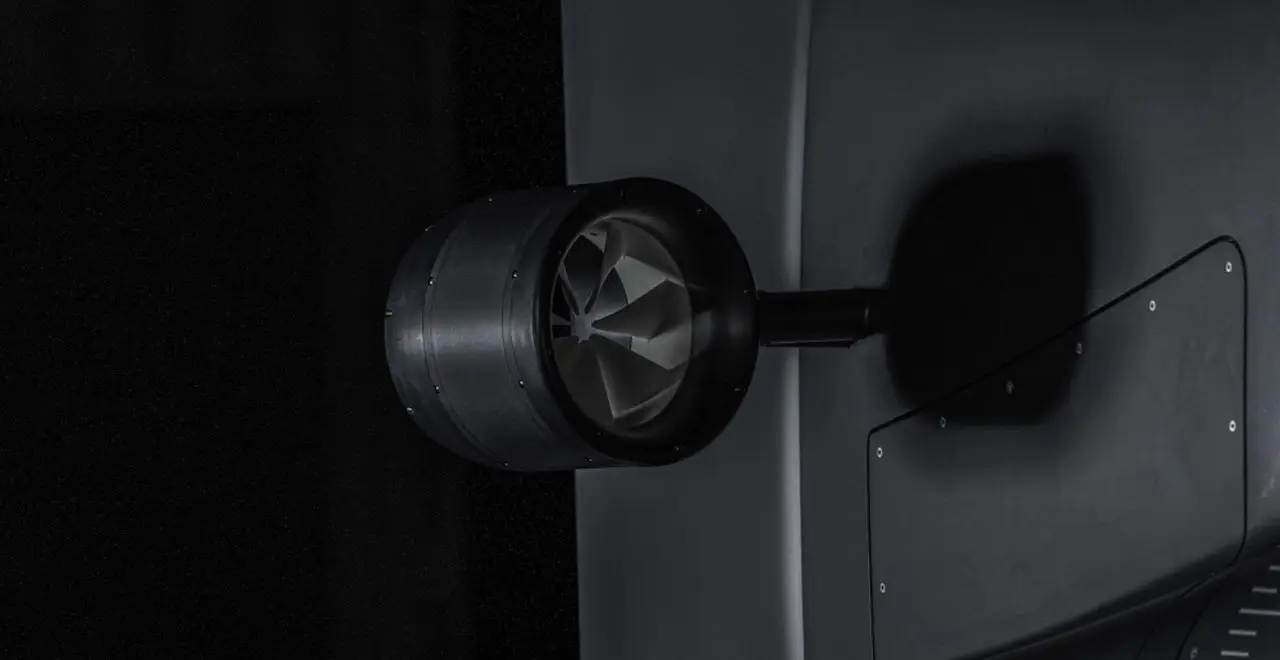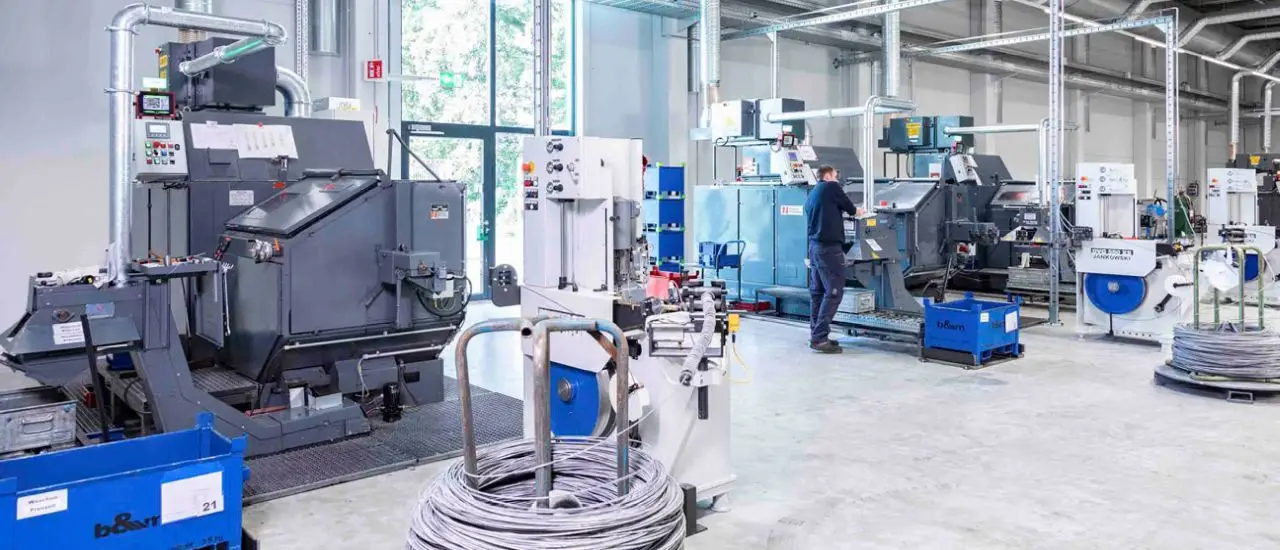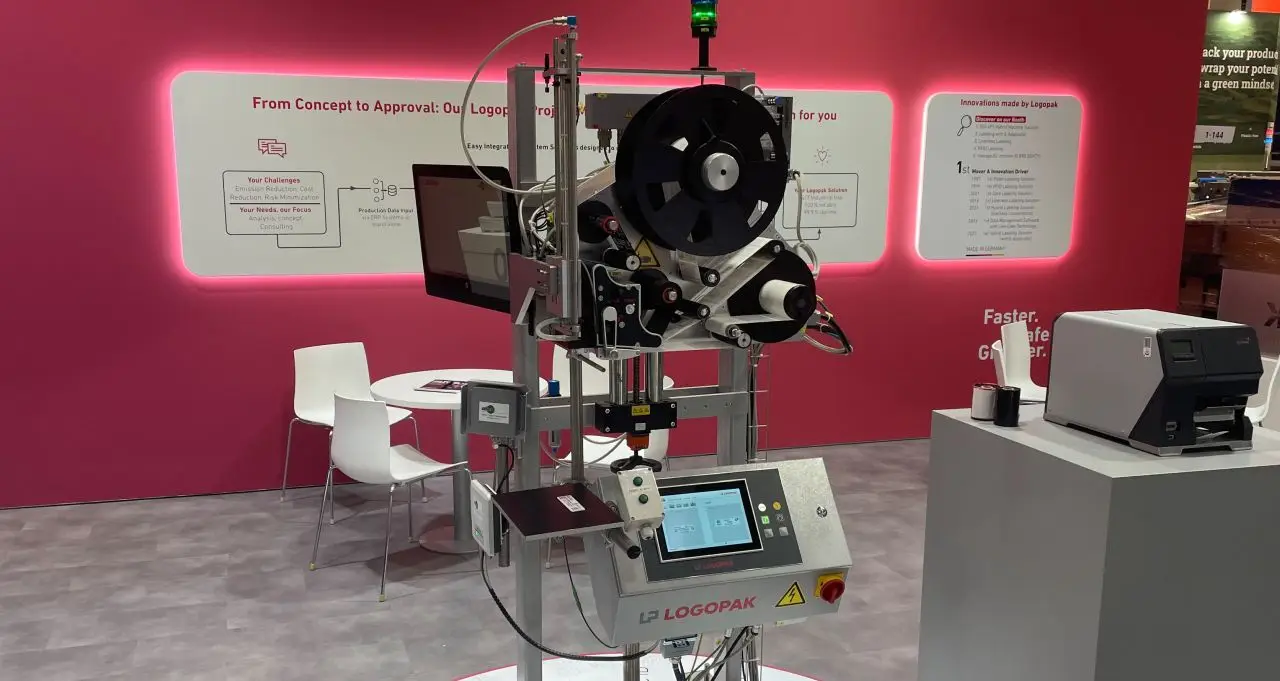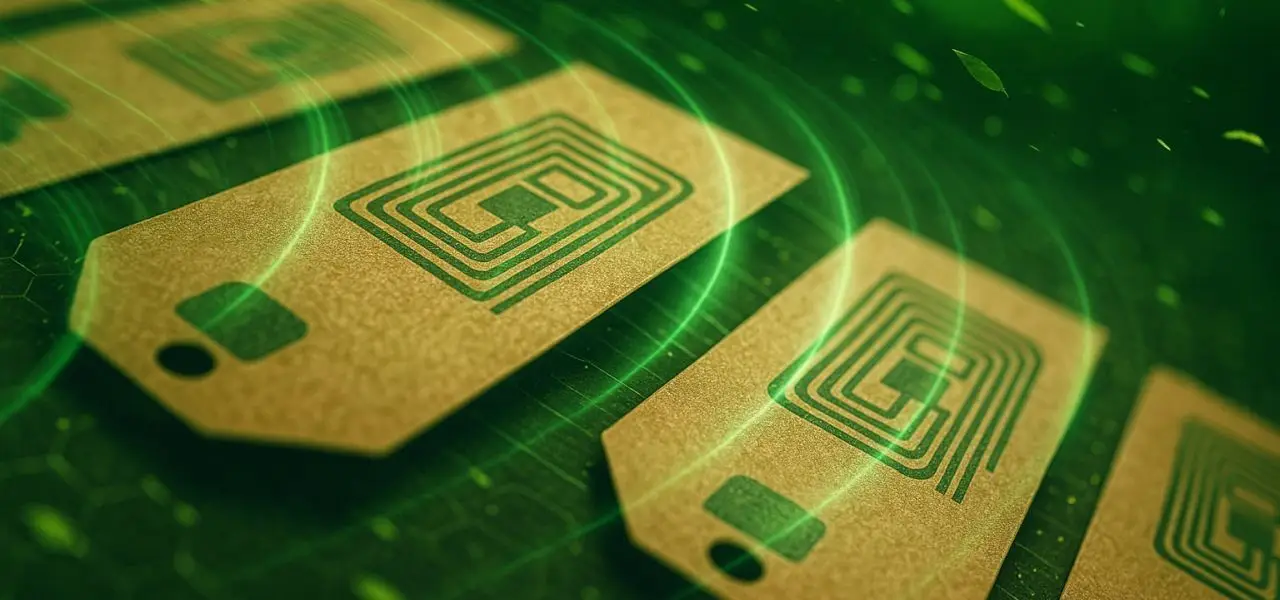- E-Thread embeds UHF RFID directly into a yarn-like filament for invisible, durable identification.
- Its resilience through washing, sterilization and mechanical stress makes it suitable for DPP requirements.
- The technology is versatile across textiles, plastics, rubber, cables and flexible materials.
- E-Thread creates multi-stage ROI by improving inventory efficiency, enabling automation and supporting circular business models.
Primo1D’s E-Thread integrates an RFID tag directly into a yarn-like filament. We spoke with Valériane Henry, Business Development Manager at Primo1D, about embedding product identity at the core of materials, what this means for the Digital Product Passport (DPP), and how durability and circularity translate into real-world value.
Technology: Embedded RFID Yarn Built for DPP Durability
Before diving into DPP, it helps to understand what makes E-Thread different from classic RFID labels and hard tags. Form factor and integration point are decisive for comfort, resilience, and lifecycle performance — especially in washing, sterilization, and high-stress conditions.
What distinguishes your E-Thread/RFID yarn approach technically and economically from classic RFID labels or hard tags – especially in harsh environments (washing/sterilization cycles, mechanical stress, heat/cold)?
Valériane Henry: Our E-Thread technology stands apart as the only RFID solution with a true yarn-like form factor, making it perfectly suited for seamless integration into textiles and flexible materials — right at the core of the product rather than attached to it.
Unlike conventional RFID labels or hard tags, which are applied externally (for example, in pockets or heat-sealed labels), E-Thread is fully embedded and invisible. Once integrated into a garment, the wearer cannot feel it, preserving comfort, aesthetics, and product design integrity.
Technically, E-Thread offers unmatched durability: it withstands repeated washing, sterilization, high temperatures, and mechanical stress without losing functionality. In contrast, traditional RFID labels often fail after a few washing cycles, making them unsuitable for long-term identification — a major limitation when meeting the requirements of the Digital Product Passport (DPP), which demands persistent, reliable product identity throughout the item’s lifecycle.
Thanks to its embedded, invisible, and highly resilient design, E-Thread delivers a unique combination of performance, comfort, and sustainability, making it the only truly durable RFID solution ready for the circular economy.
Role in the Digital Product Passport (DPP)
The DPP hinges on persistent, readable identity from manufacturing to recycling. Embedding RFID at the material level can unlock traceability beyond the point of sale and into circular services like repair, rental, and resale.
What role do you see for your RFID yarn in the practical implementation of the DPP throughout the entire life cycle (manufacturing, use, repair, resale, recycling)?
Valériane Henry: The Digital Product Passport (DPP) requires end-to-end traceability across the entire value chain — from manufacturing to recycling. Our E-Thread RFID yarn is the only technology capable of delivering this continuity, as it is embedded directly into the product and designed to withstand the entire lifecycle.
Because E-Thread remains functional, readable, and invisible throughout the product’s use, it ensures that identification and data association continue beyond the point of sale. This persistent connectivity enables the development of new circular business models such as repair, rental, and second-hand resale, which are key to achieving true sustainability.
One of the major challenges for the industry is efficient textile sorting at end-of-life to direct materials to the right recycling streams. Thanks to its UHF RFID tag integrated at the very core of the product, E-Thread can still be read and identified even after intensive use, making automated sorting and circular material management finally possible.
In short, E-Thread makes the DPP truly operational, by providing a durable, embedded, and readable identity throughout the entire lifecycle of the product — from creation to recycling.
Target Segments for DPP-Ready RFID Yarn
E-Thread is designed to be versatile — from apparel and workwear to plastics, rubber, cables, and other flexible materials. The value grows when the integration is seamless within existing industrial processes.
For which products and material classes is RFID yarn currently the best solution — and why?
Valériane Henry: Our E-Thread RFID technology is relevant across a wide range of products and materials — without limitations. Its unique yarn-like form factor makes it adaptable to multiple industries, from textiles to plastics, rubber, cables, and flexible materials.
We have developed formats specifically optimized for integration into garments and textile products, using standard sewing machines and conventional production processes — meaning no additional manufacturing steps are required. This ensures seamless, cost-efficient integration at the heart of the product.
Beyond textiles, the filament format can be embedded into plastics through molding or extrusion, making it ideal for rubber components, conveyor belts, cables, and large flexible materials.
In essence, E-Thread removes the traditional barriers of RFID integration. Its versatility and robustness enable use cases that were previously impossible to address with conventional RFID technologies — making it a truly universal, future-proof solution for connected products across industries.
Why RFID Yarn Fits the Digital Product Passport
DPP success isn’t only technical — it’s economic. Permanence, read reliability, and integration timing affect ROI across manufacturing, logistics, retail, and circular models.
What technical and economic properties make the yarn particularly attractive for the DPP?
Valériane Henry: From both a technical and economic perspective, E-Thread RFID yarn offers a unique fit for the Digital Product Passport (DPP) requirements.
Technically, E-Thread is embedded directly into the product, not attached to it. This means it cannot be removed, cut off, or lost, ensuring permanent identification throughout the entire lifecycle — from manufacturing to recycling. Its durability allows it to withstand intensive use, including washing, sterilization, heat, and mechanical stress, guaranteeing that the digital identity remains accessible at any point in the product’s life — a core prerequisite for DPP compliance.
Economically, E-Thread delivers multi-stage value creation. Because it can be integrated at the very first stage of manufacturing, it supports ROI across the entire value chain — from factory production and warehouse logistics, to retail operations, and later through new circular business models such as rental, repair, and resale. Its long lifespan and ability to generate value at multiple stages make it a cost-effective and sustainable investment, enabling companies to quickly recover the initial tag cost while preparing for DPP and circular economy requirements.
Use Cases & ROI for DPP and Circularity
The strongest results often come from cumulative gains along the lifecycle: faster inventories, fewer errors, and automation in operations — plus readiness for circular services that are still maturing.
In which applications do you see the greatest added value today — and how do customers measure ROI?
Valériane Henry: There is no single “best” use case for E-Thread — its true added value lies in the cumulative impact across multiple applications throughout the product’s lifecycle.
The ROI is easily measurable in all stages where inventory efficiency matters — in production lines, warehouses, and retail environments. Here, the benefits come from significant time savings, error reduction, and process automation, which deliver a clear, quantifiable return.
When it comes to emerging circular business models such as repair, rental, and resale, the ROI is more complex to calculate today because these models are still in early stages of adoption and data remains limited. However, the question is not whether companies can afford to explore these solutions — it’s whether they can afford not to.
If the industry is serious about reducing its environmental footprint and meeting DPP and circular economy goals, then investing in technologies like E-Thread is not just a cost — it’s a strategic step toward long-term sustainability and competitiveness.
Outlook: Advancing DPP-Ready Embedded RFID
Innovation continues — but some details must remain under wraps. The priorities are clear: comfort and invisibility, ruggedness, industrial fit, and sustainability through traceability and circularity.
Are you working on new developments (e.g., longer ranges, new materials, sustainability for recycling, security features)?
Valériane Henry: We are continuously working on new developments to better meet market needs and further enhance the performance of our products. As with any truly innovative technology, we remain discreet about the details of our ongoing R&D projects — innovation thrives on confidentiality.
That said, all our developments follow a clear and consistent roadmap:
maintaining the imperceptibility of our tags when integrated into products,
reinforcing their durability and reliability in the most demanding environments,
ensuring easy integration within existing industrial processes, and
contributing to sustainability goals by enabling traceability, circularity, and responsible end-of-life management.
In short, our innovation efforts are guided by one vision: to make connected products both invisible and indispensable for a more sustainable and efficient industry.
Get in Touch
Ready to make the Digital Product Passport operational in your products? Talk to us about E-Thread integration, durability, and ROI.
“E-Thread makes the Digital Product Passport truly operational by providing a durable, embedded, and readable identity from creation to recycling.”


